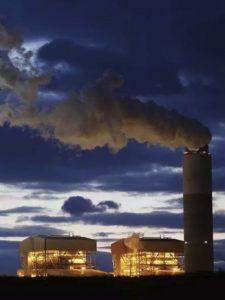James Hansen in the Boston Globe:
 THIRTY YEARS AGO, while the Midwest withered in massive drought and East Coast temperatures exceeded 100 degrees Fahrenheit, I testified to the Senate as a senior NASA scientist about climate change. I said that ongoing global warming was outside the range of natural variability and it could be attributed, with high confidence, to human activity — mainly from the spewing of carbon dioxide and other heat-trapping gases into the atmosphere. “It’s time to stop waffling so much and say that the evidence is pretty strong that the greenhouse effect is here,” I said.
THIRTY YEARS AGO, while the Midwest withered in massive drought and East Coast temperatures exceeded 100 degrees Fahrenheit, I testified to the Senate as a senior NASA scientist about climate change. I said that ongoing global warming was outside the range of natural variability and it could be attributed, with high confidence, to human activity — mainly from the spewing of carbon dioxide and other heat-trapping gases into the atmosphere. “It’s time to stop waffling so much and say that the evidence is pretty strong that the greenhouse effect is here,” I said.
This clear and strong message about the dangers of carbon emissions was heard. The next day, it led the front pages of newspapers across the country. Climate theory led to political action with remarkable speed. Within four years, almost all nations, including the United States, signed a Framework Convention in Rio de Janeiro, agreeing that the world must avoid dangerous human-made interference with climate.
Sadly, the principal follow-ups to Rio were the precatory Kyoto Protocol and Paris Agreement — wishful thinking, hoping that countries will make plans to reduce emissions and carry them out. In reality, most countries follow their self-interest, and global carbon emissions continue to climb.
More here.
